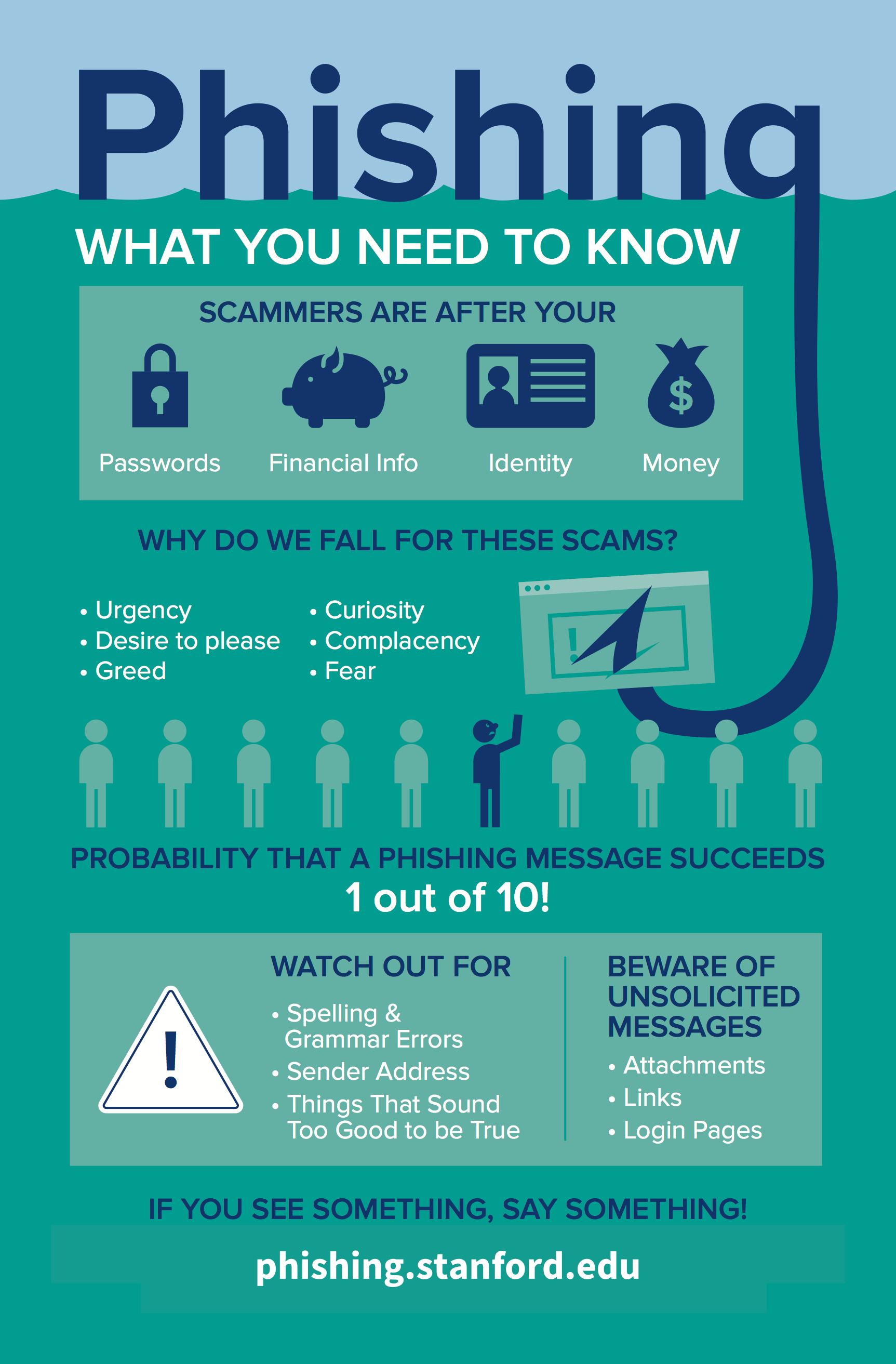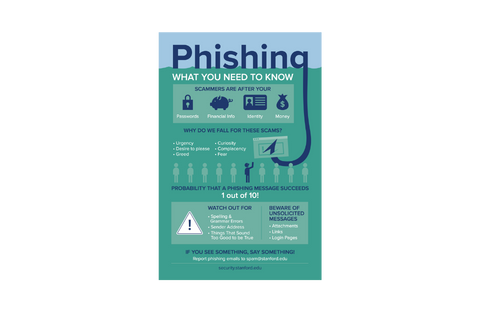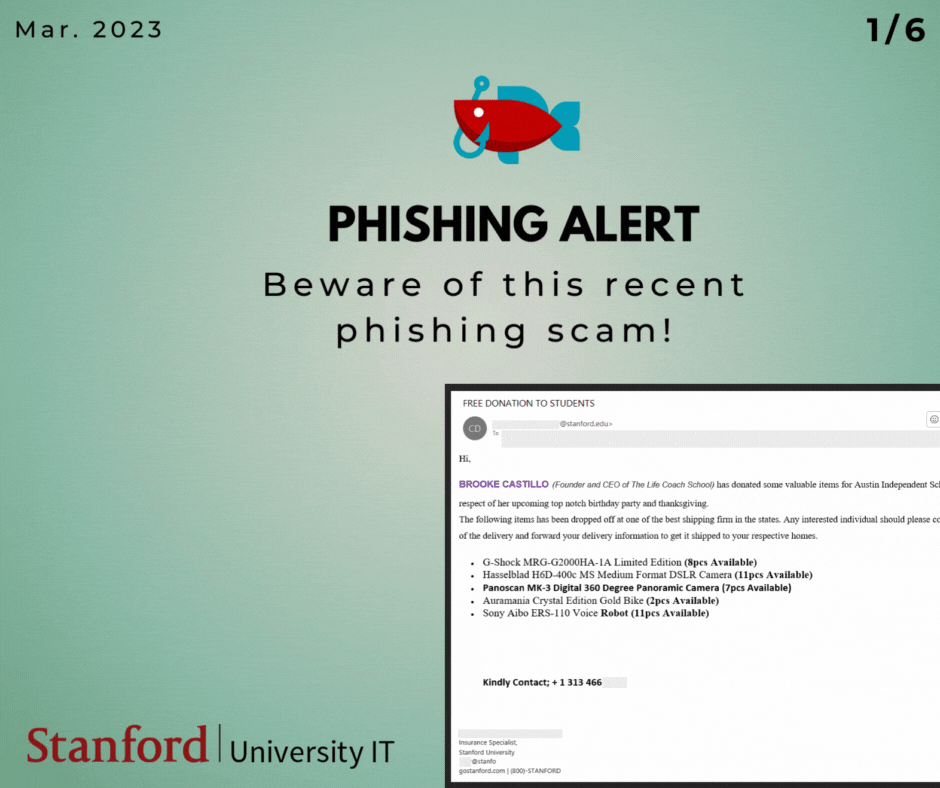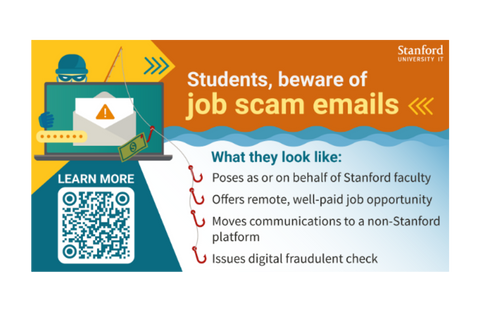Did you know? The probability that a phishing message succeeds is 1 out of 10!
But you can learn to stay safe from phishing scams and make your community safer, too, with these safety facts.

Phishing: what you need to know.
Scammers are after your:
- Passwords
- Financial info
- Identity
- Money
Why do we fall for these scams?
- Urgency
- Desire to please
- Greed
- Curiosity
- Complacency
- Fear
Probability that a phishing message succeeds: 1 out of 10!
Watch out for:
- Spelling and grammar errors
- Sender address
- Things that sound too good to be true
Beware of unsolicited messages:
- Attachments
- Links
- Login pages
If you see something, say something!
Click the image to see full-size version
Key facts
Scammers are after your identity, your accounts and information, and your money.
That's why you should always be extremely cautious with:
- Unsolicited messages
- Unfamiliar sender addresses
- Requests for personal information
- Login pages
- Attachments
- Links
- Things that sound too good to be true
- Urgent requests
Keep going to keep learning.











